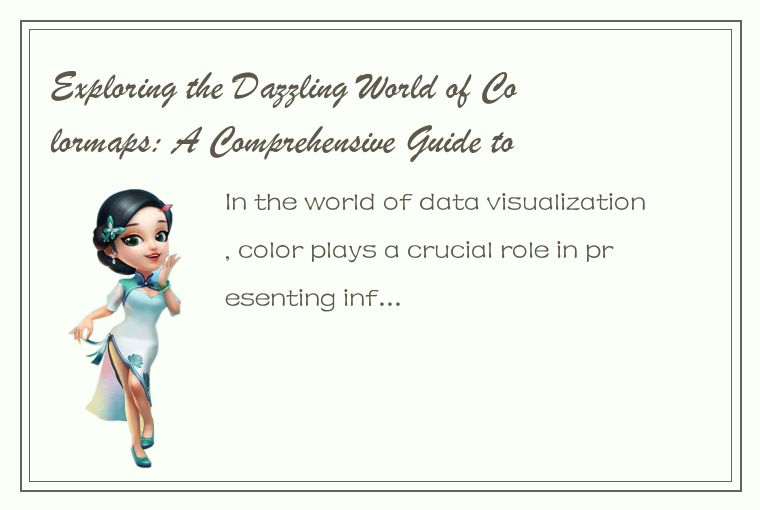In the world of data visualization, color plays a crucial role in presenting information effectively. It enhances the visual appeal and helps to make sense of the data being presented. At the heart of this important aspect of data visualization is the colormap.

A colormap is a range of colors defined in a particular order to represent data values in a visualization. It translates data values to colors, allowing our minds to absorb information more easily, even when dealing with large data sets. Choosing an appropriate colormap is critical to creating visualizations that accurately convey data trends, patterns and relationships.
There are a vast array of colormaps out there, but unfortunately, not all of them are suitable for every visualization. Understanding the different types of colormaps and when to use them is essential in producing effective, accurate and informative visualizations.
So, let's dive into the world of colormaps and explore the different options available.
Sequential Colormaps
Sequential colormaps are the most common type of colormap, and they are used when data is presented in a continuous range. The colors in the colormap shift in shade or hue along a gradient from one end to the other. The simplest example of a sequential colormap is grayscale, which goes from black to white.
Other types of sequential colormaps include those that shift in a single hue, such as the Blues or Greens colormap, which shifts from light to dark in a range of blue or green hues. These types of colormaps are used when data has a natural order, such as data that falls on a spectrum, like temperature or altitude.
Divergent Colormaps
Divergent colormaps are used to present data that has a central midpoint or is centered around a value. They consist of two sequential colormaps that meet in the middle. The two colors that meet in the middle are chosen to provide a natural midpoint, often a neutral color such as white or gray.
Divergent colormaps are used when data has positive and negative values, and the midpoint is important to highlight. These colormaps allow the user to quickly see the range of data and the midpoint, making it easy to understand trends and patterns. A popular example of a divergent colormap is the red-blue colormap, where blue represents negative values and red represents positive values, with white or gray in the middle.
Qualitative Colormaps
Qualitative colormaps are different from both sequential and divergent colormaps. Instead of providing a range of values, they provide a set of unique and distinct colors. These colormaps are used when working with categorical data, where each category has a unique color assigned to it.
A common example of a qualitative colormap is a set of rainbow colors, with colors such as red, orange, yellow, green, blue and purple assigned to different categories. It is essential to choose distinct colors to ensure the viewer can easily differentiate between the categories. If the colors are too similar, it can be challenging to interpret the data accurately.
Conclusion
In conclusion, colormaps are a crucial aspect of data visualization. They help us to interpret data, find patterns, and understand the relationships between different data points. Choosing the appropriate colormap for your data is essential, and understanding the different types of colormaps can vastly improve the overall effectiveness of your visualization.
Whether you are working with continuous data, data with a central value, or categorical data, choosing the right type of colormap is crucial. Remember to consider the natural order of the data, the midpoint, and the distinctiveness of the colors you choose.
By exploring the dazzling world of colormaps, we can elevate the quality and accuracy of our data visualizations, making it easier and more engaging for viewers to understand the story being told.




 QQ客服专员
QQ客服专员 电话客服专员
电话客服专员